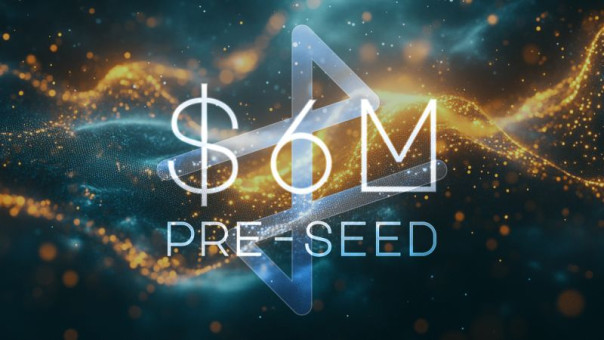Apex Fusion, on a Mission to End Web3 Fragmentation
By Olivier Acuña | TH3FUS3 Chief Editor
July 22, 2024 09:13 AM
Reading time: 4 minutes, 15 seconds
TL;DR Apex Fusion is revolutionizing the blockchain landscape by dismantling the silos that keep networks like Ethereum and Cardano isolated. Apex Fusion integrates diverse blockchain technologies through a multi-chain architecture to enhance interoperability, security, and efficiency.

To date, the Internet and the World Wide Web are the largest decentralized communication systems the world has seen. The evolution of that Web2 ecosystem, Web3, offered people decentralized and private personal data not controlled by the tech giants or global corporations; however, it ended up being another siloed ecosystem.
We are now in a stalemate. Many different blockchain technologies arose to try to solve these problems of security, scalability, and decentralization, but the trilemma proved impossible to fix with just one technology.
Also, different use cases showed that they require different types of regulations and implementations. Now, veterans from Ethereum and Cardano are joining forces to launch Apex Fusion, aiming to address Web3's fragmentation problem.
Apex Fusion is a project focused on addressing that question by uniting networks and knocking down fragmentation, one of the most significant barriers to Web3 adoption, efficiency, and security.
Fragmentation
What is fragmentation, and how did it become one of decentralization's most pernicious challenges? At the beginning of the blockchain revolution, Bitcoin stood alone as a decentralized network created to transfer wealth. Soon, platforms like Ethereum, Cardano, Tron, Cosmos, Polkadot, Solana, and many more brought smart contracts, Dapps, and a standard upon which developers could build new currencies.
While this led to a Cambrian Explosion of decentralized projects and startups, each was predicated upon maintaining value within an isolated ecosystem. Different technical standards and costly inter-network transactions meant users had more incentive to compete rather than collaborate.
Currently, Ethereum maintains market dominance, boasting thousands of projects and even Fortune 500 companies actively building on the accounts-based Ethereum virtual machine (EVM) protocol. Many new projects try to emulate or extend Ethereum by building on an EVM-centric approach.
However, other blockchain platforms like Cardano have opted for the unspent transaction output (UTXO) model for its enhanced security and scalability. Cardano also brought concepts of formal verification and liquid staking into the blockchain world, adding to the overall value.
While both offer a solid technological backbone to build decentralized businesses, they silo value within their ecosystems, leaving users, builders, and investors locked in a digital arms race for superiority and market share.
Interoperability
Ironically, this diminishes value for all users. It also turns a blindsight to what everybody knows but seems to prefer ignoring—efficiency, security, lower fees, and mass adoption will only come with interoperability and defragmentation.
A recent NASDAQ report stated, "Interoperability enhances efficiency, reduces costs, and broadens access to digital assets and services, thereby accelerating the evolution and adoption of Web3 by users entrenched in the Web2 paradigm."
Furthermore, a Bank for International Settlements study suggests that the fragmented nature of cryptocurrencies prevents them from effectively serving as money, which fundamentally relies on widespread acceptance and positive network externalities where its value increases as more people use it.
In contrast, blockchains experience negative network externalities because more usage means more significant congestion or saturation, which leads to higher fees and the creation of more cryptocurrencies to ease congestion. The result is even greater fragmentation.
Although "cross-chain bridges" aim to enhance blockchain interoperability, they fail to address fragmentation and introduce significant security risks. These bridges depend on a few validators for transaction verification, increasing the potential for attacks and security breaches, as seen in incidents like the Axie Infinity hack.
Networks like Arbitrum, Celer, and Portal bridge EVM and non-EVM environments. However, added transaction costs, complex user interfaces, and unruly gas fees have prevented the adoption of bridging solutions.
The solution
For Apex Fusion, the missing piece is not a bridge but a multi-chain architecture that interoperates with the EVM and UTXO worlds as a single ecosystem.
"We have an opportunity to combine the best parts of high-performing ecosystems. We're building a bigger table that everyone can sit at rather than constructing a bridge that only a few can cross," Apex Fusion core team member and IOG Alum Jerry Fragiskatos said.
Andrej Muzevic, of Apex Fusion and former Ethereum developer, sees integrating familiar technology from the EVM and UTXO ecosystem as key to building trust in the new network.
"Deploying battle-tested architecture is critical to making crypto happen in a non-partisan way. We're inviting everyone to work together," he said.
Like Ethereum, Apex Fusion also understands that scaling comes from L1 and L2 solutions, but unline Ethereum, where the mainnet has the incentive to compete with its L2s for liquidity and use cases, and L2s need to compete against their peers to survive, Apex Fusion has an L1 that is naturally architected to empower it's L2s and does not compete with them on execution layer.
Similarly, Apex Fusion L2s (Nexus and Vector) are built with different technologies, battle-tested, and built for various use cases with distinct advantages, putting them into a collaborative instead of a competitive position.
Apex Fusion will launch its mainnet within the next couple of months. From the start, it will be committed to interoperability, defragmentation, a Web3 collaborative community, open-source technology, and regulatory compliance. The core team at Apex Fusion believes that the only way to reach the decentralized web is together.



